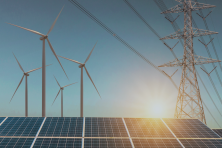Two dangerous coal export incidents last week, one in Virginia and one in B.C., remind us not only that the proposed coal export terminals in the Northwest are very risky for rail-line communities and those close to the terminals, but also that coal is a very different commodity from other bulk exports.
On Thursday, a freight train carrying coal for export derailed, spilling more than 1,000 tons of coal. Thankfully there were no injuries. However, local coverage on Scottsville, VA highlights what a mess it will be for the community to clean up the 1,000 tons of coal and to fix the tracks. This derailment comes on the heels of the one year anniversary of the July 2 coal train derailment in Mesa, WA.
We’re entering “derailment season.” Last summer there were many coal train derailments. One cause for some had to do with the hotter temps expanding the tracks. A tragic coal train derailment in Chicago, IL last summer that killed a couple in a car was directly attributed to expansion of the tracks from the heat: “Railroad officials say extreme heat created kinks in the rails and caused the derailment. Twenty-eight train cars carrying coal from Wyoming to Milwaukee jumped the tracks, and their weight caused the bridge to collapse, according to officials.”
The heat has been very bad all along the East Coast these last few weeks (this PBS clipshows tracks buckling in Massachusetts), including Virginia. Did the heat cause the Scottsville derailment? We do not know yet, but we do know the railroads are aware of the problems the heat causes for the rails. Virginia Railway Express has a page that describes “heat orders” or orders that require railroad engineers to slow down trains to guard against the danger of extremely hot weather.
Train derailments can happen for many other reasons, including coal dust accumulation along the tracks causing damage to the rails and increasing the likelihood of flooding along the tracks, as documented by BNSF on their own website (the rail company that would carry most of the coal to proposed ports in the Northwest):
“BNSF has determined that coal dust poses a serious threat to the stability of the track structure and thus to the operational integrity of our lines in the Powder River Basin. . . our regulating agency, the Surface Transportation Board (STB) has confirmed that coal dust is a harmful contaminant of rail ballast.”
BNSF also estimates that up to 500 pounds of coal can be lost from each car en route. Most coal trains have up to 150 cars. We’re told we should feel better because if they spray the coal with what is basically glue, up to 75% less coal would be lost along the way. But that still means coal—about 125 lbs/car—is lost in transit. That sure isn’t like a few apples falling off the truck near a community along the highway.
What happened in B.C. last week reminds us of the serious challenges of storing a combustible commodity at a terminal. The coal pile fire at Westshore coal export terminal in B.C. not only leaves one wondering what caused the fire, but also about the needed water supply to put out fires at the proposed terminals and the air quality impacts. Lansing, MI had a coal pile catch on fire last summer (started by the hot weather) and the neighbors struggled with the pollution and smell.
The B.C. fire also raises questions as to what would happen if there was a fire on one of the barges carrying coal from the proposed terminal at Port of Morrow in Oregon that is currently not having to undergo an EIS process like proposed terminals in Longview and Cherry Point in Washington. At a hearing with the Oregon Dept. of Environmental Quality, Hood River City Councilmember Kate McBride raised the question about the plans to fight a coal barge fire if one were to occur on the Columbia River and was told that the plan was to “let it burn.”
Coal is clearly not like other export commodities, given that it can self-combust (it’s safe to say it’s unlikely a pile of apples or airplane parts is going to catch on fire), cause significant damage to rail lines, and is the most carbon-intensive fossil fuel. The coal industry claims that if we treat coal for export differently by looking at the climate impacts, it’ll open the door to treat many other commodities differently. As my wise colleague KC Golden has pointed out, that is like claiming the squirt gun manufacturers should be worried about an assault weapons ban. Coal is stoking the global warming furnace. We don’t see any other commodity wreaking havoc like that locally and globally.






